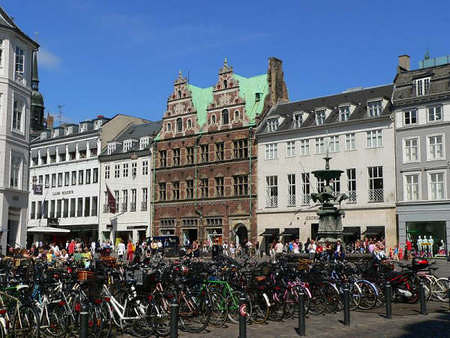Get Thee Bicycling

May is National Bike Month so get your bikes out and take a ride — alone, with friends or your entire family. Looking for a special event? Find it here.
Don’t have a bicycle? You can probably find a bargain at a local garage sales or get one for free on The Freecycle Network. Feeling lucky? People for Bikes is giving away bicycles — sign up and take a chance.
Run errands around town on your bike and save gas, get moving/burn calories, and see your neighborhood from a fresh perspective.
Denmark, where people ride bicycles every day, was found to be the “happiest nation in the world” by the University of Leicester’s World Map of Happiness a few years ago. Could it be they’re leaders in “bike culture?” Let’s check the facts:
1. In Denmark, at last count, 18% of the population cycle daily.
2. In Copenhagen, 36% of the population of the Greater Metropolitan area cycle daily to work or places of learning. That is 500,000 daily cyclists.
3. If you exclude the Greater Metro Area and just count Copenhagen proper, 55% cycle daily. On a hot summer’s day that number can reach 65%.
4. 80% of the above cyclists continue to ride throughout the winter.
5. In urban areas in Denmark there are separated bike lanes along most streets. In the country, most roads have separated bike lanes off to the side.
6. Denmark has the world’s safest bicycle culture. Our safety statistics are exceptional.
7. The busiest bike stretch in the nation is Nørrebrogade in Copenhagen. 35,000 cyclists use the street each day.
8. The average speed of cyclists in Copenhagen is 15,3 km/h.
9. Danes cycle just over 1000 km a year per capita. The Dutch occupy second place, just under 1000 km.
10. There are 1.7 million people in Copenhagen and 1.7 million bicycles.
11. Only 40% of Copenhageners own a car.
12. 36% of Copenhageners ride a bicycle, 35% take public transport and the rest drive or walk.
Come on, get out there!
